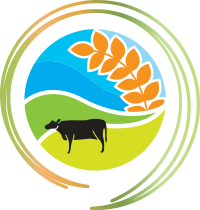
Lower Mekong River Basin Decision Support at the Nexus of Water, Food, and Energy
Local and national governments in the Lower Mekong River Basin, as well as community groups and individuals, need a more comprehensive understanding of interactions among natural and social resources in the face of development pressures. To assist with local, natural-resource decision making, the U.S. State Department through the Mekong-U.S. Partnership, is partnering with USGS, Pact, and Arizona State University, to create opportunities to integrate, explore, and analyze existing and new data.
The Cambodia-Vietnam border area, from the Tonle Sap Great Lake to the sea, will be the initial geographic focus. We plan on partnering with the Mekong River Commission for future projects including studies in Lao PDR and Cambodia.


USGS is developing a numerical groundwater flow model for the aquifers underlying the Mekong River to address ongoing and future concerns regarding development and management of resources and climate change in the Mekong River Basin. This model will be used to simulate potential future scenarios. Studying transboundary groundwater resources will increase understanding of how water use in both nations is affecting groundwater. We established our study area to conform with local hydrologic basins, specifically, the drainage basin of the Mekong River between Phnom Penh, Cambodia and Cao Lanh, Vietnam. Grid cell selection was based on other Mekong Basin hydrologic models and conforms to those grids. This will allow us to link outputs from other models and use those model results as input for the groundwater model.

We are conducting a resilience analysis to understand province-level sensitivity to variation in freshwater availability across the study region. Using socio-economic data, we are estimating basic human and livelihood water needs and linking these water demands to groundwater model outputs. In addition to identifying potentially vulnerable areas, we also aim to understand how adaptive capacity varies across the region to understand how areas are able to respond to water stress. Strengthening adaptive capacity in the most vulnerable regions will help reduce risk as water stress becomes more frequent due to climate change and increased infrastructure.

The NexView framework, using the Decision Theater®, will enable technical experts and policy makers alike to manipulate and explore multiple decision scenarios and understand the impacts of these decision alternatives before decisions are made. NexView will improve stakeholder understanding of the complex interrelated environmental, social, and economic aspects of the Lower Mekong River Basin and allow stakeholders to have more informed conversations regarding the consequences of decisions.